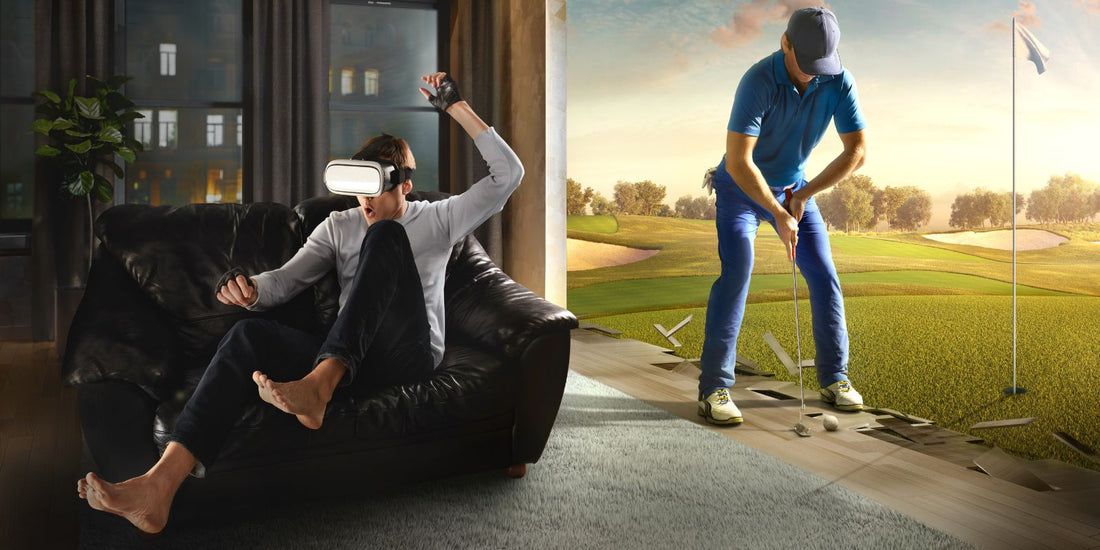
Virtual Reality: A Game-Changer for Physical Education and Sports Training
Share
We have some exciting news for fitness enthusiasts and sports pros! Are you ready to dive into the latest revolution sweeping the world of fitness and sports training? It's all about Virtual Reality (VR) – the cutting-edge technology that's completely changing the game in how we approach physical fitness and sports.
Why VR in Fitness is More Than Just a Buzz:
- Immersive Workouts: Forget boring gym routines; VR brings exciting, immersive workouts right to your living room.
- Personalized Training: Tailor your workouts to your fitness goals with personalized VR training programs.
- Fun and Engaging: Say goodbye to mundane exercise routines. VR makes staying fit an enjoyable and interactive experience.
Interesting Facts About VR in Fitness:
- Growing Market: The VR fitness industry is booming, with projections suggesting significant growth in the coming years.
- Holistic Health: VR fitness goes beyond physical exercise, offering mental and emotional well-being benefits.
- Social Connectivity: Engage in group workouts or compete with friends online, all within a virtual space.
The Power of VR in Sports Training:
- Skill Enhancement: Athletes can refine their skills in a simulated environment that mimics real-world conditions.
- Strategy Development: Teams can use VR to analyze and develop game strategies, enhancing their competitive edge.
Embracing the VR Fitness Revolution:
- Check out platforms like FitXR and Supernatural, which are leading the way in VR fitness.
- Explore VR-enabled fitness equipment, offering a new dimension to traditional exercise gear.
As the realms of virtual and physical fitness continue to blend, VR stands out as a pioneering force. It's not just about physical adeptness; it's about experiencing fitness in a whole new, digitally enhanced way. Dive into the world of VR fitness – where keeping fit is as exciting as it is effective.
Stepping into the Digital Arena of Sports
Virtual Reality is not just about gaming; it's a game-changer for sports and training. Imagine enhancing your sports strategies or refining your physical skills within a digitally simulated environment. VR is bringing a new edge to training, making it more effective and fun.
The New Wave of Physical Education with VR
- Interactive Learning: Gone are the days of mundane exercises. With VR, physical education becomes a thrilling, interactive experience. Check out our VR education collection for some awesome tools.
- Safety First: VR provides a safe space for students to practice new techniques without the risk of injury.
- Customizable Training: Tailoring VR scenarios to individual needs means everyone gets a chance to improve at their own pace.
VR: Every Athlete's Dream Training Partner
- Mastering Techniques: Dive into diverse virtual scenarios with VR, perfecting your skills through repetition.
- Strategic Gameplay: Use VR to simulate real-game situations and develop unbeatable strategies.
- Building Mental Strength: VR helps condition athletes' mental responses, keeping them cool under pressure.
- Feedback and Growth: After your VR session, get insightful feedback to highlight your strengths and areas for improvement.
Overcoming VR Training Challenges
While VR in sports training is promising, there are a few hurdles:
- Balancing Virtual and Reality: It's crucial to ensure skills learned in VR translate effectively to real-world performance.
- Budgeting for Quality: Top-notch VR equipment, like the Meta Quest 3, offers incredible features but can be a significant investment.
- Health in VR: Be mindful of motion sickness or discomfort from prolonged VR use. Regular breaks are key!
Wrapping It Up
As VR continues to merge with physical training, we're seeing the dawn of an era where athletes are not only physically skilled but digitally savvy as well. VR is not just a training tool; it's a pathway to a future where sports training is more efficient, safe, and inclusive.
Thanks for visiting ARVRedtech.com.
If you're into the latest AR and VR developments in fitness, education, and training, don't forget to sign up for our newsletter. Got a cool product or idea? Contact Us! Enjoy this piece? Share it with your friends!
Disclaimer: We're an Amazon Affiliate and earn from qualifying purchases. Product and company names mentioned are trademarks™ or registered® trademarks of their respective holders. ARVRedtech.com is not affiliated with thesw companies and the information here is for educational purposes and is subject to change.